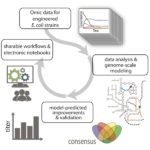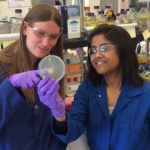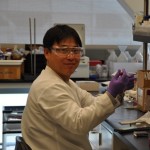 JBEI’s Danny Tang volunteered on June 1 at the Science Day organized by the Community Resources for Science at a local Oakland elementary school. Danny partnered with Howard Matis, a Berkeley Lab Physicist to run an experiment about cosmic rays which involved custom built detectors. Danny and Howard saw three elementary classes and interacted with 90 students!
JBEI’s Danny Tang volunteered on June 1 at the Science Day organized by the Community Resources for Science at a local Oakland elementary school. Danny partnered with Howard Matis, a Berkeley Lab Physicist to run an experiment about cosmic rays which involved custom built detectors. Danny and Howard saw three elementary classes and interacted with 90 students!
The organizer of this event, Community Resources for Science, is a non-profit organization dedicated to connecting and engaging educators, students, and scientists in a vibrant and innovative web of science learning resources, transforming science education.







